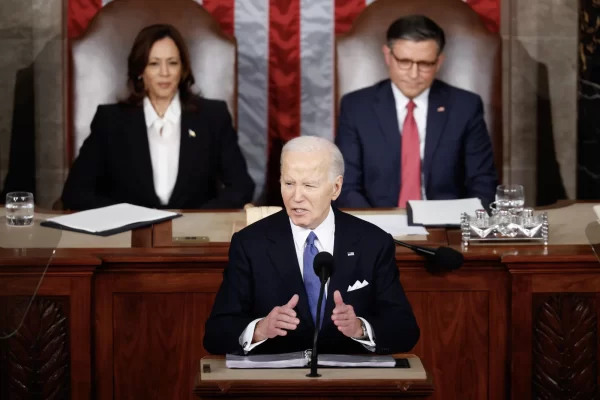Biden Considers Tapping Into A Rarely Used Reserve Amidst the Diesel Crisis
According to a senior White House official, the Biden administration is preparing to release diesel from a rarely used reserve against the skyrocketing fuel prices amidst a major supply crunch.
Diesel is an important fuel for the U.S. economy, used largely by farmers and shippers. The fuel powers farm and construction equipment on top of trains, boats, and trucks that play a substantial role in national trade and transportation. With America’s inflation crisis at the worst it’s been in four decades, soaring diesel prices contribute to its profound impact on the government, businesses, and families.
Diesel prices have surged almost 75% in the last year, and according to AAA, the national average cost managed to reach $5.56 on Sunday, up by $3.17 from prices a year ago and extremely close to last week´s record high of $5.58. In the Northeast region, where there are comparatively fewer refineries than the rest of the country, prices have hit higher heights, such as New York´s prices of around $6.51 per gallon, a shocking 102% increase from one year ago. Leading economists told CNN that prices could prospectively spike to $10 per gallon by the end of the summer.
The reserve Biden wants to use in question is the Northeast Home Heating Oil Reserve, created in 2005 and consisting of about 1 million barrels of diesel. It has only been tapped once before during the fallout of the 2012 Hurricane Sandy. The aforementioned White House official stated that Biden and his team are aware that tapping the reserve may not have a significant effect on reducing diesel prices but could nevertheless locate and prevent outages that would be “highly disruptive to families and businesses.”
“The system is definitely under strain,” said the senior White House official. Inventories of diesel in the Northeast have plunged to record lows in recent weeks because of a confluence of factors that include the war in Ukraine and surging demand.
Some, however, look at the proposed solution as ineffective. The reserve contains about 1 million barrels of diesel, which Andy Lipow, president of Lipow Oil Associates, called “small potatoes.” He said, “It might buy a couple of weeks or even months, but it doesn’t solve the underlying issues.”
The Northeast Home Heating Oil Reserve was originally started to fill a supply shortage that was caused by a severe winter storm back in 2000. Then, in 2011, the Reserve was converted from home heating oil to a cleaner-burning diesel known as ultra-low sulfur distillate, used to power engines in trucks, tractors, ships, and more.
“We think this looks like the exact circumstance where consideration of the release should be done and that’s what the president has directed,” the White House official said.
But the reserve is small compared to America’s stockpile of emergency oil, the Strategic Petroleum Reserve, which contains around 420 million barrels of crude oil, even after the huge releases that the reserve conducted during Biden’s time in office.
Lipow further criticized the plan, saying, “It’s a band-aid—one that isn’t going to last very long and when it comes off the injury is not healing.”
The diesel supply crunch comes during a rough economic time in the U.S., only elevated by factors such as the multiple refineries in the United States and Canada that were retired in recent years, greatly reducing the ability of the system to meet the demands of diesel. With the worst of COVID-19 in the world’s wake, people have begun to travel at rebounded rates from before the pandemic. Jet fuel prices have been on a rapid rise, an incentive for refineries to direct their efforts towards investing in that type of fuel instead of diesel.
Analysts also mention the loss of Russian petroleum products in driving up U.S. diesel exports around the world due to Russian refineries shutting down in response to Western countries’ stance in the Russia-Ukraine War. However, the demand for diesel is growing within the country as well.
On a brighter note, signs that the diesel supply crunch is relieving indicate that the Northeast reserve may not be needed. Government statistics display that distillate fuel inventories have increased by 1.2 million barrels in the past week, even though they sit 22% below the five-year average for this general yearly period. Tom Kloza, global head of energy analysis at the Oil Price Information Service, adduced that the Colonial Pipeline, an important pipeline for carrying fuel to the Northeast, has become fully subscribed following previous underuse.
“My hunch is we’re probably through the worst of this,” Kloza said.

Kriti is a freshman who loves to read, play the guitar, and find different foods to try and recreate. She enjoys listening to and exploring different kinds...












